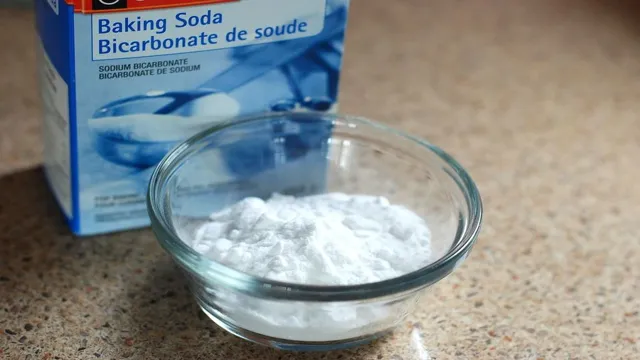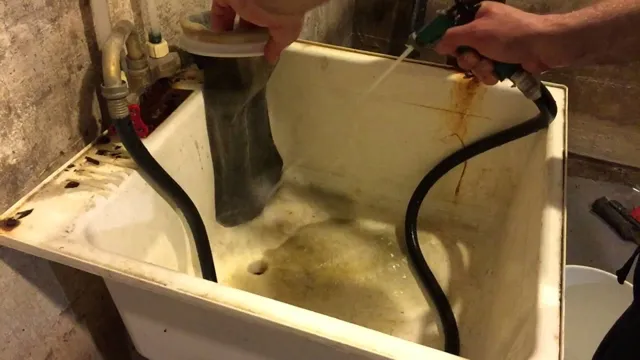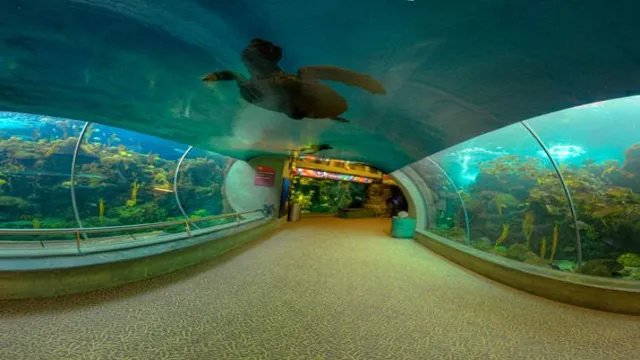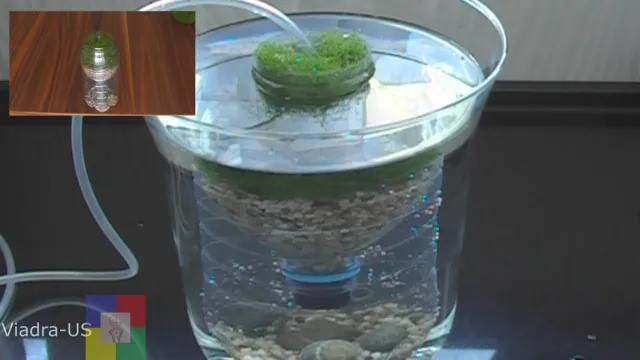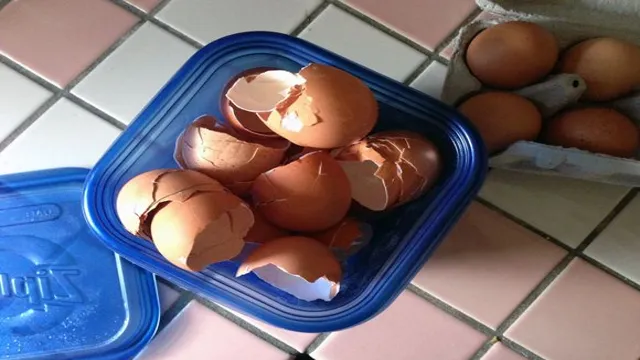Do you want to create a stunning and unique aquarium that will take your breath away? Consider building a labyrinth aquarium, an intricate water world that will make your fish feel right at home. Not only will your aquatic pets have more space to explore and thrive, but your guests will also be in awe of the impressive display. Building a labyrinth aquarium does take some skill and effort, but with a little patience and creativity, it is well worth the effort! In this blog, we’ll show you exactly how to build a labyrinth aquarium step-by-step so you can take on this project and create a beautiful and mesmerizing aquatic wonderland.
Get ready to dive in!
Materials Needed
To build a labyrinth aquarium, you will need several materials. First on the list are aquarium decorations, such as rocks, plants, and wood, which will give the aquarium a natural look and feel. You will also need an aquarium tank that is large enough to accommodate labyrinths, which prefer slow-moving water and plenty of room to swim.
A filter system is also necessary to ensure that the tank stays clean. An aquarium heater is essential to maintain the right temperature for the labyrinths, which thrive in warm water. Lastly, you will need fish food and a water testing kit to ensure that the water is properly balanced for the labyrinth’s health.
By gathering all of these materials, you can create a stunning labyrinth aquarium that will provide endless hours of enjoyment.
Glass tank
If you’re planning to set up a new fish tank, one of the first things you’ll need to consider is the main material for the tank itself. Glass tanks are a popular choice, so here are some of the materials you’ll need to get started. Firstly, you’ll need the glass itself – make sure you choose high-quality aquarium-safe glass to ensure that it’s strong and durable enough to hold your water without any leaks.
You’ll also need a silicone sealant to join the glass panels together, as well as a clean sponge or scraper to remove any excess sealant once it’s dried. And finally, depending on the size and shape of your tank, you may also need some additional support materials such as plastic trim or glass reinforcement bars. Getting these basic materials right from the start will help ensure your glass tank is safe, secure, and ready for your fish to enjoy.
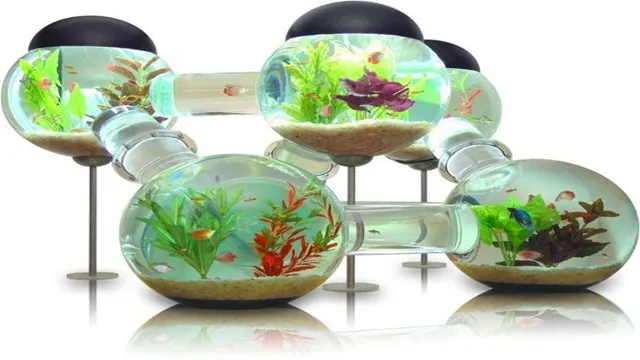
Substrate
When setting up an aquarium, one of the most important aspects is choosing the right substrate material. Essentially, the substrate is the material that lines the bottom of the tank and serves as a base for any live plants or decorations. There are many different types of materials that can be used as substrate, including gravel, sand, and even soil.
When making your selection, it’s important to consider the needs of your specific fish and plants. For example, certain species may require a finer or coarser substrate, while others may need a specific type of material to thrive. Additionally, some substrates may have a significant impact on the pH and overall chemistry of your tank water, so it’s important to do your research before making a final decision.
Ultimately, finding the right substrate will help promote healthy plant growth, facilitate natural behavior for your fish, and create an overall beautiful and functional aquarium.
Decorations
When it comes to decorations, the materials you choose can make all the difference. The first thing you’ll need is some sort of base, whether it be a tablecloth or a backdrop. Depending on your theme, you may want to go with a certain color or pattern.
If you’re going for a more festive look, consider using streamers or balloons to add some extra flair. Another option is to use lighting, like string lights or lanterns, to create a cozy atmosphere. Don’t forget about small details, like candles or flower arrangements, to tie everything together.
Whatever materials you choose, make sure they align with your theme and create the ambiance you’re looking for.
Plants
Plants need certain materials to thrive and grow. For starters, they require soil, which acts as a home, water, which helps carry nutrients, sunlight, which is key to photosynthesis, and carbon dioxide, which plants turn into glucose for energy. If you’re planning on growing plants indoors, you’ll also need to provide a suitable container, potting mix or soil, and possibly fertilizer.
Depending on the plant’s specific needs, you may also need to provide plant supports, such as stakes or trellises, to help them grow upright. When gardening outdoors, you may want to consider using organic materials like compost or mulch to improve soil quality and promote growth. Remember, each plant has unique needs, so it’s important to research the specific requirements of any plant you plan on growing to ensure its success.
Filters and pumps
When it comes to setting up an aquarium, having an efficient filtration system is essential. You will need a few materials to get started, including a filter, pump, tubing, and filter media. Filters come in many types, including hang-on-back, canister, and sponge filters. (See Also: How to Get Rid of Black Algae in My Aquarium: Top Effective Ways)
Each type has its benefits, and the one you choose may depend on the size of your tank, the type of fish you have, and your personal preferences. Pumps are necessary to circulate the water in your tank, providing much-needed oxygen to your fish. They come in submersible or external options and have various flow rates.
Tubing connects your filter and pump, and you will need to ensure that it fits appropriately. Lastly, filter media is what traps debris and other unwanted particles in your aquarium. It comes in different forms, such as sponges, ceramic rings, and activated carbon.
By selecting the right filter, pump, tubing, and filter media, you can provide a clean and healthy environment for your fish to thrive.
Building the Labyrinth
If you’re interested in creating a unique and captivating aquarium setup, consider building a labyrinth aquarium. This type of aquarium features a maze-like structure that allows fish to swim through various interconnected chambers. Building a labyrinth aquarium involves careful planning and construction.
Firstly, you need to choose the right materials, such as acrylic or glass, that will withstand the pressure of the water. Then, you’ll need to design the labyrinth itself, taking into account the size, shape, and complexity of the structure. Building the labyrinth involves gluing together individual chambers and creating secure connections between them.
It’s essential to ensure that the labyrinth is structurally sound and leak-free before filling it up with water and adding fish. With patience and creativity, building a labyrinth aquarium can be a rewarding DIY project that will provide hours of entertainment for you and your fish.
Create platform
When it comes to creating a platform, it’s important to build a solid foundation. The first step in building the Labyrinth is to map out your goals and objectives. What is your platform’s purpose? Who is your target audience? Once you have a clear understanding of your platform’s goal, you can start building the structure.
You’ll need to consider the various elements that will make up your site, such as your user interface, navigation menus, and information architecture. It’s also important to think about how your content will be organized and presented to your audience. The key to building an effective platform is to create a seamless user experience that keeps your audience engaged and coming back for more.
By taking the time to build a solid foundation, you can ensure that your platform is equipped to handle the unique needs of your audience and achieve your desired outcomes. Trust us, it’s worth the effort!
Add substrate and decorations
Now that the structure of your labyrinth is complete, it’s time to add some substrate and decorations to make it feel like home. When choosing a substrate, you want to go with something that can hold moisture, promote healthy bacteria growth, and provide your labyrinth with a place to dig and burrow. Coconut fiber or sphagnum moss are excellent options and are readily available at most pet stores.
These substrates will also help with odor control and keep the enclosure clean. Additionally, adding some decorations such as rocks, driftwood, and plants can create a more natural environment for your labyrinth. Be sure to choose decorations that are safe for your animal and won’t harm them in any way.
The additions of substrate and decorations will not only make your labyrinth’s enclosure more comfortable but will also help stimulate their natural behaviors. Plus, it’ll look awesome!
Add plants
Adding plants is a fundamental part of building a labyrinth garden. Whether you’re looking to create a classic format or a more contemporary design, plants will significantly transform the look and feel of your space. In terms of selecting the right plants to add, you want to think about a few critical considerations.
First, make sure to incorporate some evergreen shrubs or trees into the design, as they will provide year-round structure and keep the look of the garden well-defined. Second, consider choosing some flowering perennials or bulbs to add color and texture to the space, as well as attract pollinators like bees and butterflies. Third, think about adding some fragrant plants like lavender, rosemary, and jasmine to create a sensory experience for visitors.
And lastly, ensure that the plants you choose are well-suited to the local climate and soil type. By carefully selecting and planting a variety of plants, you can create a beautiful and tranquil garden that is both functional and aesthetically pleasing. (See Also: How to Dissolve Hard Water Buildup from Aquarium: A Beginner’s Guide)
Add water
As the construction of the Labyrinth progresses, the next step is to add water. This may seem like an odd step for a structure made of stone, but the water is not just for show. It serves an important purpose in the design of the maze, helping to create a sense of mystery and confusion.
The water is directed through small channels that wind their way through the walls and floor, creating pools and flows that seem to appear and disappear at random. It is an effective way to disorient those who enter the Labyrinth, making it much more difficult for them to find their way out. It also adds a touch of beauty to the otherwise stark stone walls, the rippling water reflecting the light in a mesmerizing way.
As the water is added, the Labyrinth takes on a life of its own, becoming more than just a simple maze, but a work of art and mystery that will fascinate and intrigue all who dare to enter.
Caring for Your Labyrinth Aquarium
Building a labyrinth aquarium can be a fun and rewarding experience for any aquarium enthusiast. However, once you’ve built it, it’s important to know how to properly care for it. One key aspect is maintaining water quality.
Use a good-quality filter and perform water changes frequently to keep the water clean and healthy for your fish. Additionally, make sure to provide proper lighting and temperature conditions for your fish. Labyrinth fish, such as bettas, need warm water (around 75-80°F) and dim lighting to mimic their natural environment.
It’s also important to provide hiding spots and plant cover for your fish to reduce stress and promote natural behavior. Regular feeding is also critical. Betta fish, for example, are carnivorous and require high-protein foods such as pellets and freeze-dried bloodworms.
By properly caring for your labyrinth aquarium, you can ensure that your fish thrive and enjoy their beautiful and unique environment.
Water quality
If you’re the proud owner of a labyrinth aquarium, then you know how important it is to keep the water clean and clear. Maintaining your aquarium’s water quality is key to the health and well-being of your fish, as well as the overall success of your aquarium. To care for your labyrinth aquarium properly, make sure to regularly monitor the water quality, including pH levels, ammonia, and nitrate levels.
It’s also essential to perform regular water changes and use a quality aquarium water conditioner to help neutralize harmful substances. Remember to avoid overcrowding your aquarium, as too many fish can lead to an excessive buildup of waste and other harmful toxins. By maintaining optimal water quality and following a strict maintenance routine, you can ensure your labyrinth aquarium remains a beautiful and healthy ecosystem for your fish to thrive in.
Feeding and nutrition
When it comes to caring for your labyrinth aquarium, feeding and nutrition are crucial factors to keep in mind. These unique aquariums are home to labyrinth fish, which require a specific diet to thrive. One important thing to remember is that labyrinth fish need both protein and vegetation in their diet.
Feeding them a varied diet, including live or frozen foods like brine shrimp, bloodworms, and daphnia, along with high-quality pellets or flakes will ensure they receive all the nutrients they need. Overfeeding should be avoided, as it can lead to health problems and water quality issues. It’s best to feed your fish small amounts several times a day, rather than one large meal.
Additionally, it’s important to provide a healthy and clean environment for your fish to grow and thrive. Regular water changes and maintenance will help keep your fish healthy and happy. By providing a balanced and varied diet and maintaining a clean environment, you can ensure your labyrinth fish stay healthy and thrive in their aquarium.
Lighting and temperature
When caring for your labyrinth aquarium, lighting and temperature are two critical factors to consider. Proper lighting is important for the health and well-being of your labyrinth fish, but it’s important not to overdo it as too much light can cause stress. A good rule of thumb is to have a light cycle of 8-10 hours per day and to avoid any harsh or direct lighting.
You can also use a timer to ensure consistency in the lighting cycle. Additionally, temperature control is crucial as labyrinth fish are sensitive to fluctuations and extremes. A consistent temperature between 75-82 degrees Fahrenheit should be maintained to prevent stress and illness.
It’s essential to monitor the temperature regularly and adjust accordingly to maintain stable conditions. With the right lighting and temperature, your labyrinth aquarium will thrive and provide a beautiful, serene display. (See Also: How to Make 8020 Aquarium Stand: A Step-by-Step Guide for Fish Enthusiasts)
Cleaning and maintenance
Cleaning and maintaining a labyrinth aquarium is crucial in keeping your aquatic pets healthy and happy. To keep your aquarium clean, it’s important to invest in a reliable filter system to remove any waste and debris. Regular water changes of around 25% to 50% every two weeks will help to keep the water clean and fresh.
Make sure to also check the water parameters such as pH levels and ammonia levels to ensure a stable environment for your fish. It’s also important to remove any uneaten food and dead plant matter to prevent excess decomposing organic matter. In terms of maintenance, regular physical cleaning of the tank and equipment like the filter and heater is important to prevent buildup and malfunction.
With proper care and maintenance, your labyrinth aquarium will be a beautiful and thriving environment for your fish.
Conclusion
In conclusion, building a labyrinth aquarium is like solving the ultimate puzzle. With attention to detail, patience, and a touch of creativity, you can create a stunning underwater world that is both mesmerizing and functional. Take inspiration from the labyrinthine paths and hidden corners of ancient mazes, and let your imagination run wild.
Just remember, the true delight of an aquarium labyrinth lies not in reaching the end, but in enjoying the journey along the way. Happy building!”
FAQs
What materials do I need to build a labyrinth aquarium?
You will need a glass aquarium, aquarium silicon, aquarium gravel, aquarium plants, a filter, and a heater for the labyrinth fish.
How big should the aquarium be for a labyrinth fish?
A single labyrinth fish requires at least a 5-gallon aquarium, but it’s better to have a larger tank, especially if you plan to keep multiple fish or other species.
Can I mix labyrinth fish with other types of fish?
It’s best to keep labyrinth fish with other peaceful species that won’t compete for food or space in the tank. Some compatible fish include neon tetras, guppies, and dwarf corydoras.
How do I cycle the aquarium before adding labyrinth fish?
You can cycle the aquarium by adding ammonia to the tank and letting it sit for a few weeks until beneficial bacteria grow and break down the ammonia. Alternatively, you can use bacterial supplements to speed up the process.
How often should I clean my labyrinth aquarium?
You should do a partial water change and clean the gravel once a week, and also clean the filter every 2-4 weeks to keep the water clean and healthy for your fish.
Can I keep live plants in a labyrinth aquarium?
Yes, live plants not only provide oxygen and filtration but also mimic the natural habitat of labyrinth fish. Low-light and easy-to-care-for plants such as java moss and Anubias work well in a labyrinth aquarium.
What should I feed my labyrinth fish?
Labyrinth fish are omnivores and can eat a variety of foods such as pellets, flakes, freeze-dried or frozen brine shrimp, bloodworms, and daphnia. It’s recommended to provide a varied diet for optimal health and nutrition.


